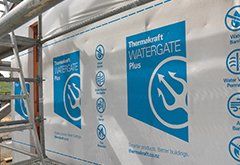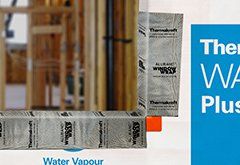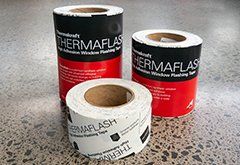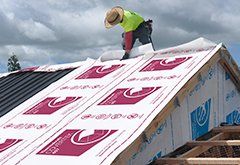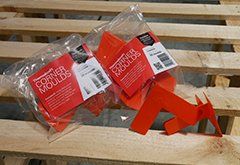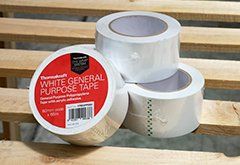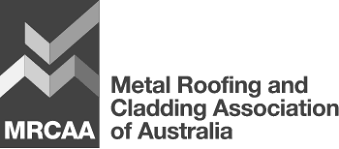From the 1st May 2019, all class 1, 2 and 4 building permits require the use of a vapour permeable membrane on the external wall. The code change was imposed because of the risks of condensation in wall cavities.
In Australian climate zones 6, 7 and 8, a vapour permeable membrane must be used on the external wall, providing an air and water barrier, which assists insulation performance, while still allowing water vapour to escape, reducing the risk of condensation.
A detailed map of the affected zones and regions are included our NCC brochure.
How Vapour Permeable Membranes Work
Vapour permeable membranes consist of a micro-porous layer of breathable film to hold out water (water barrier) while allowing water vapour to escape (vapour permeable). They provide an air and water barrier, which assists insulation performance, while still allowing water vapour to escape, reducing the risk of condensation.
Synthetic Permeable Roof & Wall Membranes
A home with synthetic permeable membrane installed on its roof and walls will provide a controlled escape path for the water vapour to flow from the cavities. The diagram above shows the movement of heat, air and water vapour through the building structure.
The Thermakraft total building wrap solution
Thermakraft’s integrated wall wrap solution is designed to control air and moisture in buildings constructed in compliance with the Australian National Construction Code.
The Thermakraft building wrap solution meets AS/NZS 4200.2017 and NZS 2295.2006 standards and includes the following products:
Synthetic Wraps
- Watergate Plus Wall Wrap
- Covertek 407 Premium Roof Underlay
Window Flashing Products
- Thermaflash Window Flashing Tape
- Aluband Bituminous Window Flashing Tape
- Orange Corner Moulds
Joining & Repair Tape
- White General Purpose Tape
Related products



